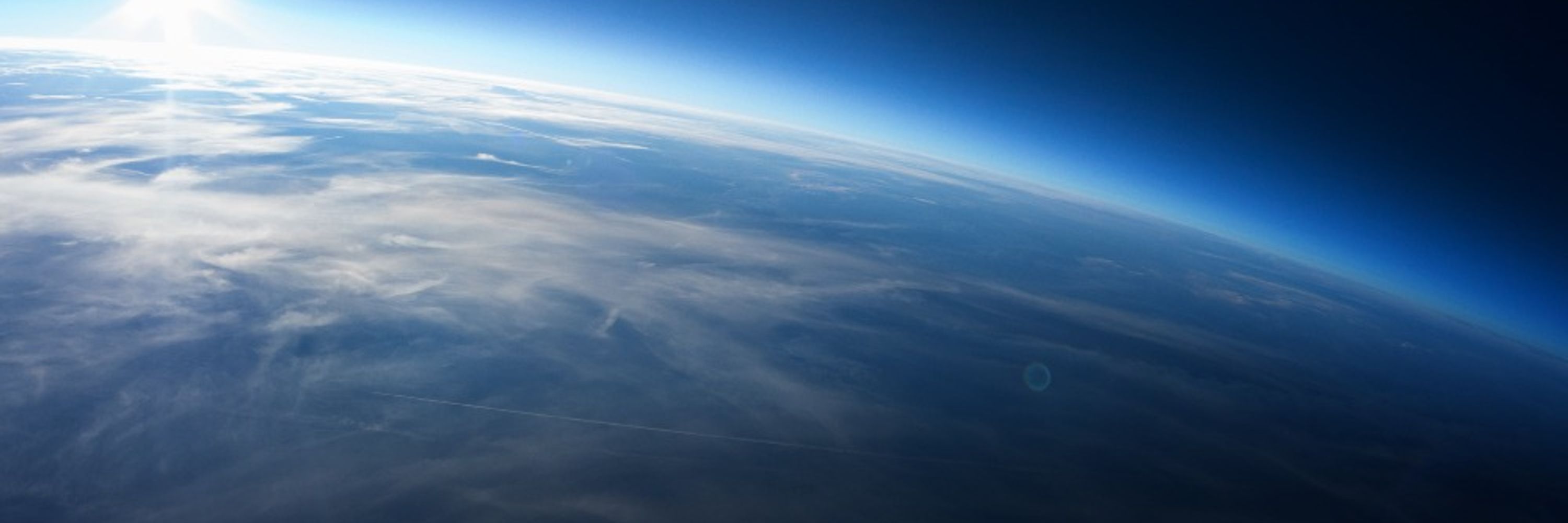
What looks like a red butterfly in space is, in reality a nursery for hundreds of baby stars, revealed in this infrared image.
(Credit: NASA/JPL-Caltech)

What looks like a red butterfly in space is, in reality a nursery for hundreds of baby stars, revealed in this infrared image.
(Credit: NASA/JPL-Caltech)
(Credit: NASA & ESA)

(Credit: NASA & ESA)
Because we see it from a single angle, it’s classified as lenticular-a mix of both
(Credit: ESA/Hubble & NASA, F. Belfiore, J. Lee and the PHANGS-HST Team)

Because we see it from a single angle, it’s classified as lenticular-a mix of both
(Credit: ESA/Hubble & NASA, F. Belfiore, J. Lee and the PHANGS-HST Team)
(Credit: ESO)

(Credit: ESO)
But nearby galaxy NGC 6744 is thought to resemble the Milky Way, making this image feel like a postcard from beyond - offering a glimpse of what our home galaxy might look like from afar...
(Credit: ESO)

But nearby galaxy NGC 6744 is thought to resemble the Milky Way, making this image feel like a postcard from beyond - offering a glimpse of what our home galaxy might look like from afar...
(Credit: ESO)
Credit: ESA/Webb, NASA & CSA, P. Freire; Acknowledgement: M. Cadelano and C. Pallanca

Credit: ESA/Webb, NASA & CSA, P. Freire; Acknowledgement: M. Cadelano and C. Pallanca
Credit: ESA/Hubble & NASA, R. J. Foley (UC Santa Cruz)

Credit: ESA/Hubble & NASA, R. J. Foley (UC Santa Cruz)
(Credit: ESA/Hubble & NASA, F. Belfiore, J. Lee and the PHANGS-HST Team, N. Bartmann)
(Credit: ESA/Hubble & NASA, F. Belfiore, J. Lee and the PHANGS-HST Team, N. Bartmann)
(Credit: ESO, Risinger)
(Credit: ESO, Risinger)
(Credit: NASA/JPL, Cornell)

(Credit: NASA/JPL, Cornell)
(Credit: Data: NASA/JPL-Caltech/SSI/CICLOPS / Processing & Layout: Kevin M. Gill)

(Credit: Data: NASA/JPL-Caltech/SSI/CICLOPS / Processing & Layout: Kevin M. Gill)
(Credit: ESO/VVVX survey / video by Universal-Sci)
(Credit: ESO/VVVX survey / video by Universal-Sci)
This striking nebula offers a glimpse into the turbulent early stages of star formation.
(Credit: ESO/VPHAS+ team. Acknowledgement: CASU)

This striking nebula offers a glimpse into the turbulent early stages of star formation.
(Credit: ESO/VPHAS+ team. Acknowledgement: CASU)
(Credit: ESA/Hubble & NASA, C. Murray, J. Maíz Apellániz)

(Credit: ESA/Hubble & NASA, C. Murray, J. Maíz Apellániz)
(Credit: xkcd)

(Credit: xkcd)
It is a so-called pallasite, a type of stony iron meteorite with olivine crystals, estimated to be 4.5 billion years old!!
(Credit: Wolfgang Sauber)

It is a so-called pallasite, a type of stony iron meteorite with olivine crystals, estimated to be 4.5 billion years old!!
(Credit: Wolfgang Sauber)
It recently ended a several-hundred-million-year star-forming era and now offers clues to how low-mass galaxies can sustain such activity despite limited gas and energy
(Credit: ESA/Hubble & NASA)

It recently ended a several-hundred-million-year star-forming era and now offers clues to how low-mass galaxies can sustain such activity despite limited gas and energy
(Credit: ESA/Hubble & NASA)
Each of these fuzzy patches is an entire galaxy of its own!
Credit: NASA, ESA, CSA, STScI, J. Jee (Yonsei University, UC Davis), S. Cha (Yonsei University), K. Finner (Caltech/IPAC)

Each of these fuzzy patches is an entire galaxy of its own!
Credit: NASA, ESA, CSA, STScI, J. Jee (Yonsei University, UC Davis), S. Cha (Yonsei University), K. Finner (Caltech/IPAC)
A supernova is clearly visible as the bright, bluish star in the upper right of the image.
Credit: T.A. Rector (University of Alaska Anchorage), H. Schweiker & S. Pakzad NOIRLab/NSF/AURA)

A supernova is clearly visible as the bright, bluish star in the upper right of the image.
Credit: T.A. Rector (University of Alaska Anchorage), H. Schweiker & S. Pakzad NOIRLab/NSF/AURA)
(Credit: ESO, U.G. Jørgensen)

(Credit: ESO, U.G. Jørgensen)
We see the "propeller"-shaped disturbances the moon creates which are several km across.
(Credit: NASA/JPL-Caltech/SSI/CICLOPS/Kevin M. Gill)

We see the "propeller"-shaped disturbances the moon creates which are several km across.
(Credit: NASA/JPL-Caltech/SSI/CICLOPS/Kevin M. Gill)
The unique dust lanes around its nucleus are believed to be the result of this merger.
(Credit: ESA/Hubble & NASA, L. Kelsey)

The unique dust lanes around its nucleus are believed to be the result of this merger.
(Credit: ESA/Hubble & NASA, L. Kelsey)
Credit: ESO/VPHAS+ team. Acknowledgment: Cambridge Astronomical Survey Unit

Credit: ESO/VPHAS+ team. Acknowledgment: Cambridge Astronomical Survey Unit
Megamasers are intensely bright, around 100 million times brighter than the masers found in galaxies like our own.
Credit: ESA/Hubble & NASA - Acknowledgement: Judy Schmidt (geckzilla)

Megamasers are intensely bright, around 100 million times brighter than the masers found in galaxies like our own.
Credit: ESA/Hubble & NASA - Acknowledgement: Judy Schmidt (geckzilla)
Set against a colourful backdrop of stars, Gum 41 is a pleasantly symmetric example of a Strömgren sphere: a shell of hydrogen gas atoms glowing in due to the radiation of the central star
(Credit: ESO/VPHAS+ team. Acknowlegement: CASU)

Set against a colourful backdrop of stars, Gum 41 is a pleasantly symmetric example of a Strömgren sphere: a shell of hydrogen gas atoms glowing in due to the radiation of the central star
(Credit: ESO/VPHAS+ team. Acknowlegement: CASU)

